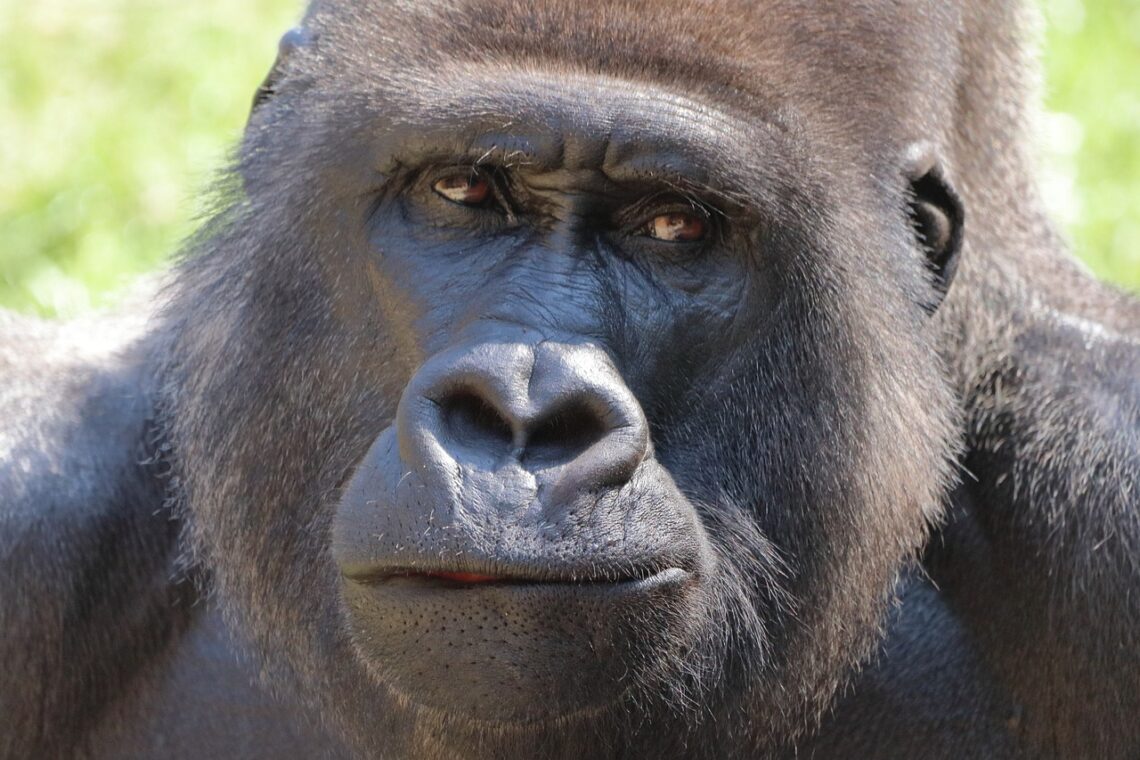
The Best 110 Facts About Gorillas (A Comprehensive Guide)
Facts About Gorillas
Introduction to Gorillas
Throughout the world, interest in facts about gorillas has grown as conservation efforts highlight the urgent need to protect these endangered species.
However, many people remain unaware of the diversity and intricate lives of gorilla groups spread across different habitats in Central Africa and beyond.
Gorillas, among the largest living primates, have fascinated human beings for centuries.
Their gentle nature, complex social structure, and unique physical appearance have made them one of the most studied wild animals.
Species and Subspecies of Gorillas
To begin with, gorillas are divided mainly into two species: eastern gorillas and western gorillas.
Each species has unique subspecies with their own distinct behaviors and environments.
For example, the eastern lowland gorilla and mountain gorilla subspecies belong to the eastern gorillas, while western lowland gorillas and cross river gorillas fall under western gorillas.
These different types of gorillas have adapted to various natural habitats, ranging from dense rainforests to high altitudes.
Gorilla Social Structure and Behavior
Interestingly, gorilla families are structured around a dominant silverback male who leads and protects the group.
Adult males are known for their broad chests, black hair, and the striking silver patch on their backs, which gives the silverback gorillas their name.
This dominant male gorilla makes crucial decisions for the family group, including guiding them through the forest and defending against threats.
Female gorillas and their offspring rely heavily on the leadership of the adult males to ensure safety and survival.
Moreover, gorilla groups consist of multiple adult females, their babies, and younger males, creating a complex social structure.
These social animals communicate through body language, facial expressions, and vocalizations that help maintain harmony within the group.
In fact, gorillas’ use of sign language in captivity has shown their remarkable intelligence and ability to connect with human children and researchers alike.
Threats and Conservation Efforts

Furthermore, the habitat loss and habitat destruction caused by human activities pose the biggest threat to wild gorillas.
Expansion of agriculture, illegal wildlife trade, and human diseases have drastically affected gorilla populations, leading to their classification as endangered species.
Conservation efforts, such as mountain gorilla trekking in national parks and programs like the Dian Fossey Gorilla Fund, have played a vital role in protecting these primates and their environments.
Diet and Physical Characteristics
Among the many interesting facts about gorillas is their diet, which primarily consists of bamboo shoots, small insects, and various plants found in their different habitats.
While adult gorillas spend a lot of time foraging, their opposable thumbs help them grasp and manipulate food efficiently.
It is fascinating to note that despite their massive size, gorillas are gentle giants, showing nurturing behavior toward their young gorillas and a peaceful demeanor within the family group.
In addition, adult male mountain gorillas can weigh up to 400 pounds, making them the largest primates alive today.
The physical appearance of these gorillas varies depending on their subspecies and habitat. For instance, mountain gorillas inhabit high altitudes and are distinguished by thicker, longer hair, which helps them endure colder temperatures.
To summarize, facts about gorillas reveal a profound connection between these great apes and their environment, social dynamics, and survival challenges.
Through education and awareness, local communities and global efforts continue to ensure that gorilla species thrive despite the pressures they face.
Expand your knowledge by reading these Fascinating Facts About Amur Leopards
Did You Know
Gorillas are the largest living primates, with adult male silverbacks weighing up to 400 pounds. Source: World Wildlife Fund (WWF)
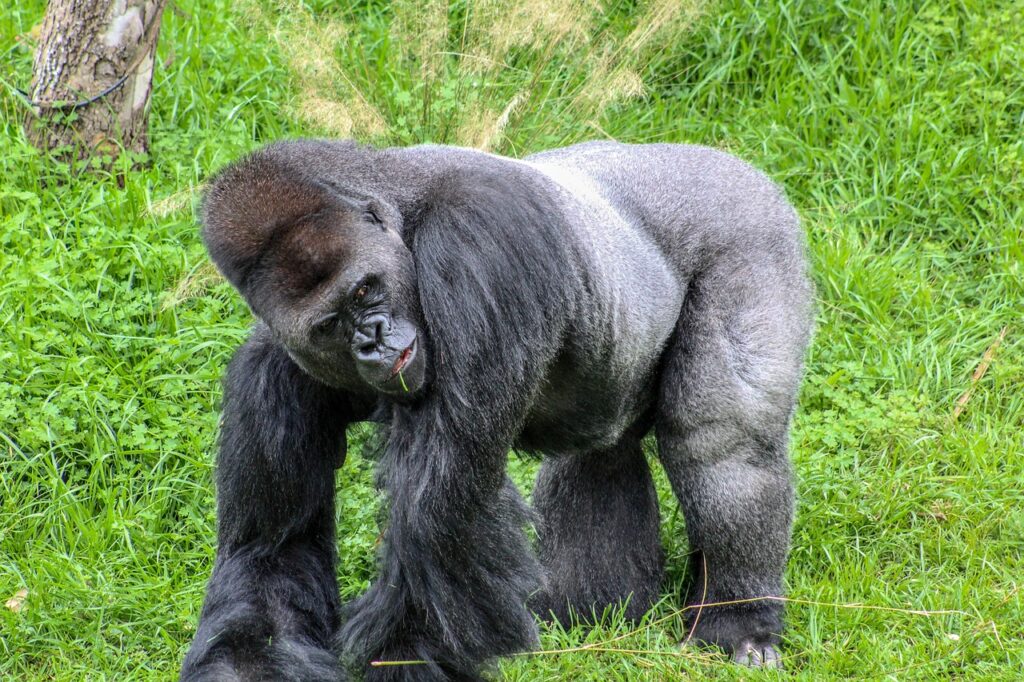
Understanding the Different Subspecies of Gorillas
When exploring facts about gorillas, it is essential to recognize the diversity within the species.
Four primary subspecies are widely accepted by primatologists: the eastern lowland gorilla, the mountain gorilla, the western lowland gorilla, and the cross river gorilla.
Each subspecies inhabits different habitats and exhibits unique behaviors, adaptations, and social structures.
Eastern Lowland Gorillas and Mountain Gorillas
Eastern lowland gorillas, also known scientifically as Gorilla beringei graueri, are found primarily in the lowland tropical forests of the Democratic Republic of Congo.
Their natural habitat covers vast square miles of dense forest, but in recent years, habitat destruction has significantly reduced their range.
The mountain gorilla, a subspecies of the eastern gorilla, is known for living in high-altitude environments such as those in the Virunga volcanic mountains spanning Rwanda, Uganda, and the Democratic Republic of Congo.
Because of their high-altitude habitat, mountain gorillas have adapted by growing thicker and longer black hair, which helps protect them from colder temperatures.
Western Lowland Gorillas and Cross River Gorillas
On the other hand, western lowland gorillas, or Gorilla gorilla gorilla, are found across countries like Equatorial Guinea, Cameroon, and Gabon.
These gorillas are the most numerous subspecies but still face significant threats from habitat loss and the illegal wildlife trade.
Meanwhile, the critically endangered cross river gorillas are the rarest subspecies, inhabiting a small area along the border between Nigeria and Cameroon.
Due to their limited habitat and fragmented populations, cross river gorillas are often the focus of intense conservation efforts.
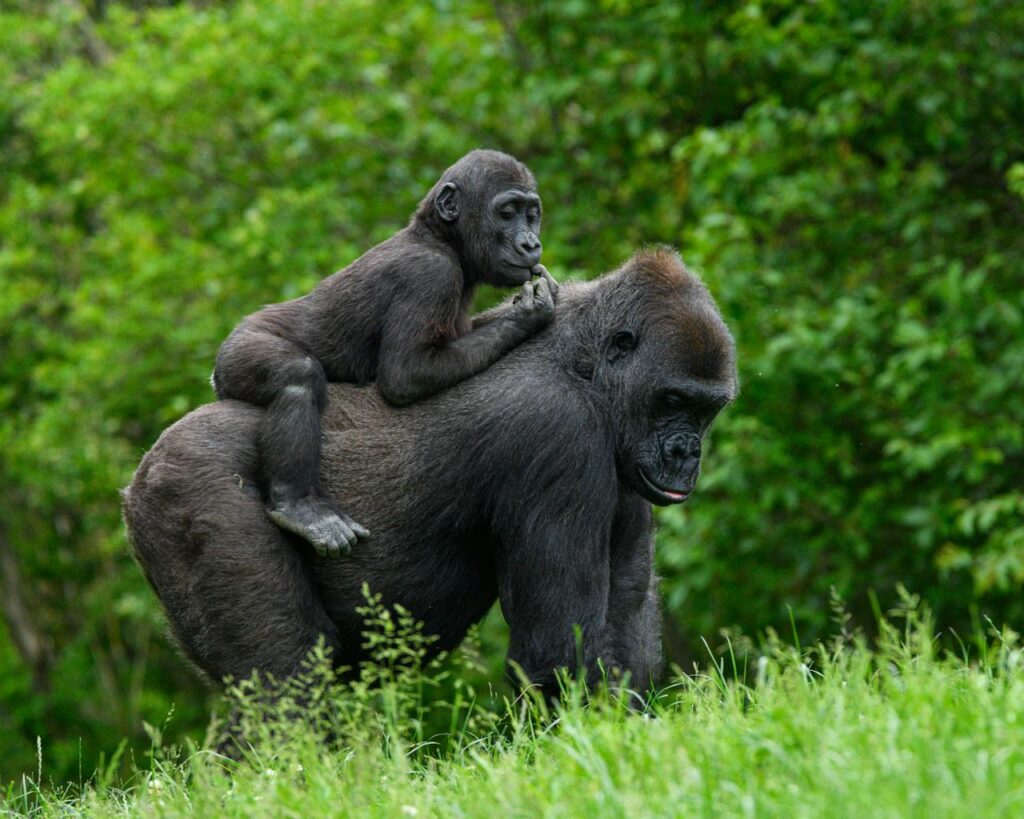
Social Structure and Gorilla Families
One of the most fascinating facts about gorillas lies in their social organization. Gorilla families, often called gorilla groups or troops, are structured around a dominant silverback male who leads the group.
The silverback is not only the largest adult male gorilla but also the protector and decision-maker.
Adult females and their babies typically form the core of the family group, with young males and females gradually maturing within this social unit.
The Role of the Dominant Silverback
The dominant silverback is responsible for maintaining peace within the group, mediating conflicts, and defending against threats from predators or rival males.
Moreover, this dominant male gorilla chooses mates and plays an active role in raising gorilla babies by offering protection and support.
Because of this, silverback mates and their offspring rely heavily on his leadership for survival.
Family Groups and Social Animals
Besides their social structure, gorillas are known as social animals that use body language, facial expressions, and even chest beating to communicate.
Chest beating, for example, is a unique behavior performed primarily by silverbacks to signal dominance or to intimidate intruders.
Additionally, gorillas display a range of facial expressions to show emotions such as fear, contentment, or aggression, making their interactions complex and nuanced.
Unique Physical and Behavioral Traits
Many interesting facts about gorillas relate to their physical appearance and abilities.
For instance, gorilla subspecies have unique fingerprints, much like human beings, which can be used to identify individual gorillas.
Additionally, gorillas have opposable thumbs, enabling them to grasp objects and use tools—a behavior rarely observed among wild animals.
Use of Tools and Intelligence
In recent years, it has been observed that gorillas utilize sticks to measure water depth or to assist in gathering food, revealing their problem-solving skills.
Sign language experiments with captive gorillas have further demonstrated their intelligence, as some gorillas have learned to communicate using a limited vocabulary of English words and signs.
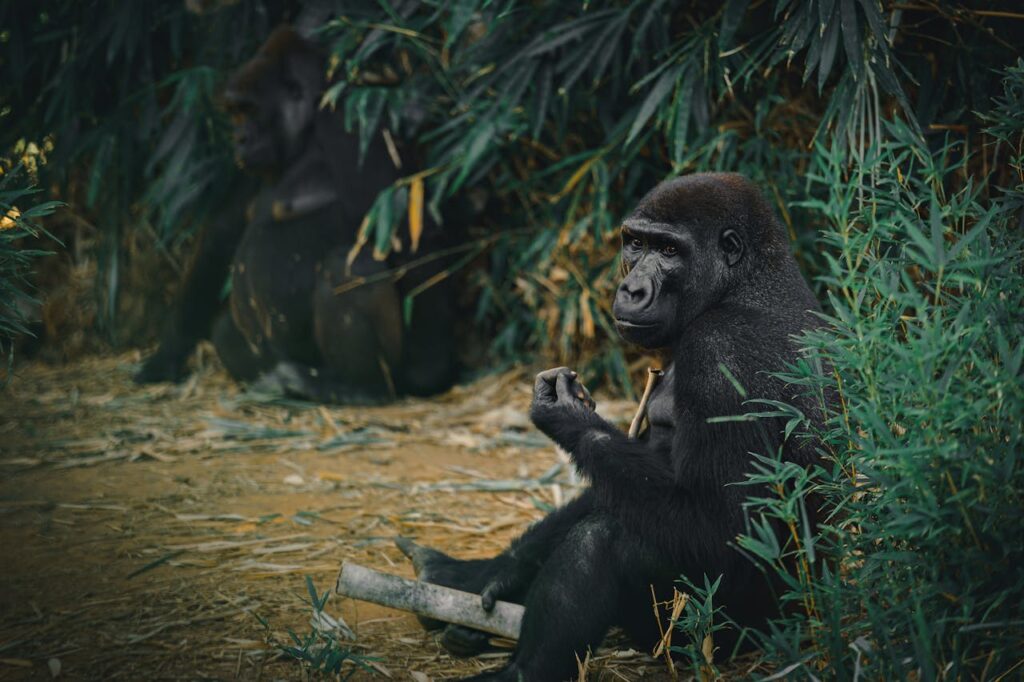
Physical Appearance
Adult gorillas generally have broad chests, strong arms, and a muscular build adapted for life in forested habitats.
Silverback gorillas stand out due to the silver-gray hair that grows on their backs as they mature. Baby gorillas, in contrast, are born with black hair and gradually develop adult features over time.
Habitat and Distribution of Gorillas
Facts about gorillas are closely tied to their natural habitat, which is primarily found in the tropical forests of Central Africa. However, different subspecies of gorillas occupy various habitats, each adapted to their environment.
Different Habitats Across Africa
Western lowland gorillas inhabit lowland rainforests and swamp forests, thriving in the dense vegetation of countries like Equatorial Guinea and Gabon.
In contrast, mountain gorilla habitat is restricted to high altitudes in volcanic mountain ranges, such as the Virunga National Park, which covers parts of Rwanda, Uganda, and the Democratic Republic of Congo.
This rugged terrain with bamboo shoots and dense undergrowth provides both food and shelter.
The Importance of Habitat for Gorilla Survival
Because habitat loss and habitat destruction caused by human activities have dramatically reduced the available living space for gorillas, their survival has become increasingly precarious.
Activities such as logging, mining, agriculture, and infrastructure development have encroached upon gorilla habitats. Therefore, conservation efforts have focused heavily on protecting these vital areas.
Conservation Efforts and Local Communities
Local communities near gorilla habitats have been actively engaged in conservation efforts. Their participation is critical in reducing illegal wildlife trade and human encroachment.
Programs supported by organizations like the Dian Fossey Gorilla Fund have helped increase awareness about the vital role gorillas play in their ecosystems.
Diet and Foraging Behavior
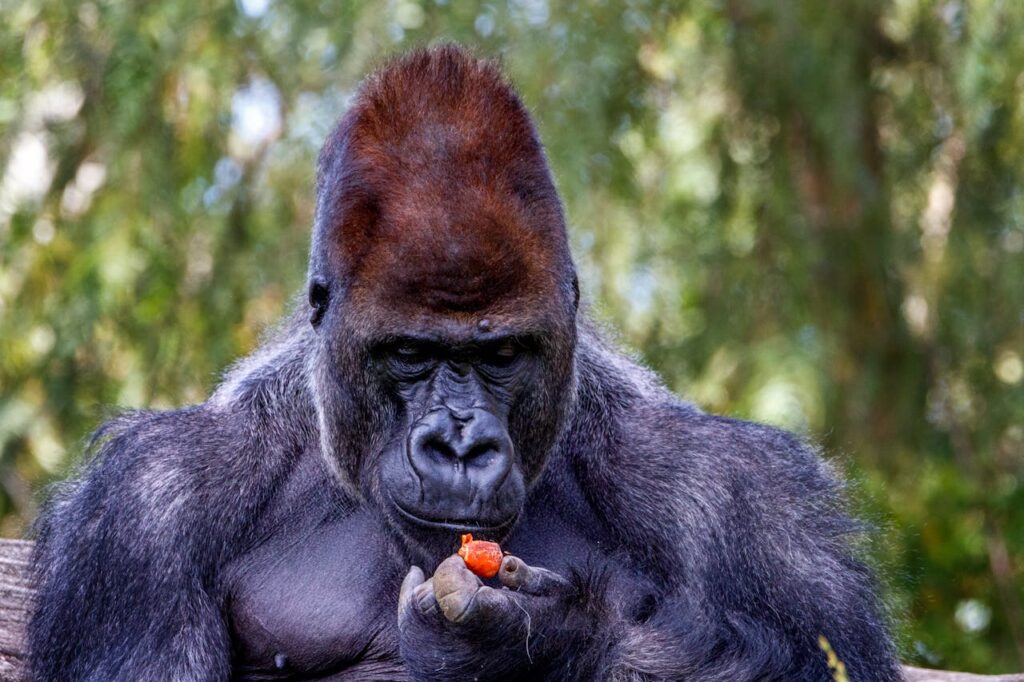
One of the more interesting facts about gorillas is their largely vegetarian diet. Gorillas are primarily herbivores, consuming a wide variety of plants, leaves, stems, bamboo shoots, and occasionally small insects.
What Do Gorillas Eat?
Adult gorillas spend a lot of time foraging, sometimes covering several square miles each day to find sufficient food.
Western lowland gorillas tend to eat more fruit than their eastern counterparts, who rely more heavily on fibrous plants and bamboo.
Baby gorillas learn from their mothers what foods are safe and nutritious, gradually transitioning from nursing to solid foods.
Foraging and Use of Tools
In addition to their diet, gorillas have been observed using tools to access food. For example, sticks are sometimes used to gauge water depth or extract insects from logs.
This tool use is a clear indication of their cognitive abilities and adaptability in the wild.
Reproduction and Raising Young Gorillas
Gorilla families are tightly knit, with female gorillas often raising their babies with considerable care and attention.
Baby gorillas are nurtured within the safety of the family group, learning essential survival skills from their mothers and other members.
The Role of Adult Females and Silverbacks
Adult females are primarily responsible for nurturing gorilla babies. However, the dominant silverback also plays a protective role, guarding the young against predators and rival males.
The bond between the silverback and gorilla babies is often strong, highlighting the social cohesion within the family group.
Development of Young Gorillas
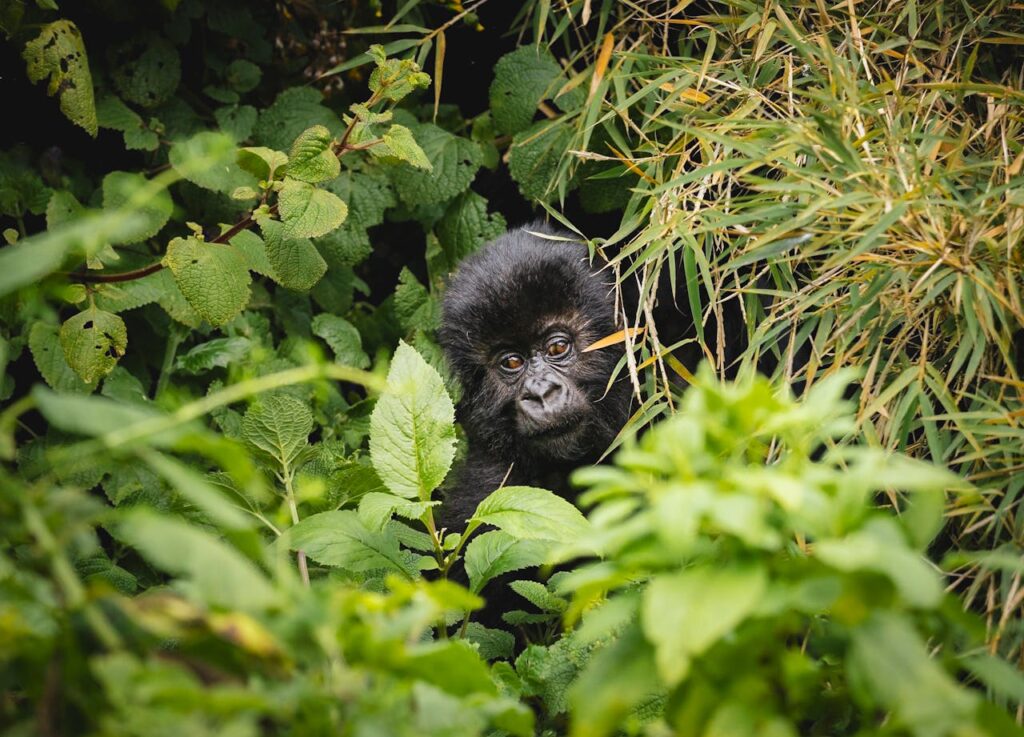
Young gorillas are playful and curious, exploring their environment under careful watch. As they mature, younger males may leave the family group to establish their own gorilla groups or join bachelor groups.
This social migration helps maintain genetic diversity and balance within gorilla populations.
Threats Facing Gorillas Today
The biggest threat to gorillas remains human-driven, including habitat loss, poaching, and disease transmission from human populations.
Impact of Human Diseases
Diseases such as Ebola and respiratory infections have been responsible for significant declines in wild gorilla populations.
Close genetic similarities with human beings make gorillas particularly susceptible to human diseases, increasing the urgency for stringent conservation measures.
Illegal Wildlife Trade
Despite legal protections, gorillas are still hunted for bushmeat or captured for the illegal wildlife trade. This threatens the survival of many subspecies, especially the already critically endangered cross river gorillas.
Conservation Success Stories and Ongoing Challenges
Although the threats facing gorillas are severe, many inspiring conservation success stories demonstrate hope for the future of these majestic creatures.
Facts about gorillas are often intertwined with the tireless efforts of conservationists, researchers, and local communities.
Mountain Gorilla Population Growth
The mountain gorilla population, once critically low, has shown promising signs of recovery due to effective conservation programs.
Recent years have witnessed an increase in the mountain gorilla population within protected areas such as Volcanoes National Park in Rwanda and Bwindi Impenetrable National Park in Uganda.
These parks provide a safe habitat, free from habitat destruction and poaching. Moreover, responsible mountain gorilla trekking has raised awareness and funds to support conservation efforts.
Role of National Parks and Protected Areas
National parks and reserves are essential in providing gorillas with secure habitats spanning thousands of square miles.
These protected areas act as strongholds for wild gorillas and allow researchers to monitor individual gorillas and their families.
Efforts by organizations such as the Dian Fossey Gorilla Fund emphasize long-term research, anti-poaching patrols, and community engagement, highlighting the vital role of collaboration in conservation.
Interesting and Fun Facts About Gorillas

To deepen understanding, here are some fascinating and fun facts about gorillas that illustrate their unique place in the animal kingdom:
- Gorillas share approximately 98% of their DNA with human beings, making them our closest relatives among the great apes.
- Each gorilla has unique fingerprints, much like human children.
- Adult males develop the iconic silver hair on their backs at around 12 years old, signaling their maturity and social status.
- Gorillas have been observed using more than 20 different vocalizations, including hoots, grunts, and roars, to communicate within their group.
- Despite their size and strength, gorillas are known as gentle giants due to their nurturing behavior toward young gorillas and peaceful group dynamics.
- Gorilla babies are born weighing about 4 to 5 pounds and remain dependent on their mothers for up to three years.
- Silverback gorillas use chest beating not only to intimidate rivals but also as a form of communication within their family group.
- Gorillas possess opposable thumbs that aid in food manipulation and tool use, showcasing advanced motor skills.
How Do Gorillas Communicate?
Communication is key to the survival and cohesion of gorilla groups. Facts about gorillas reveal that their body language and facial expressions convey a wide range of emotions and intentions.
Facial Expressions and Body Language
Gorillas use subtle facial expressions to show happiness, fear, aggression, or submission. For example, a relaxed gorilla will have soft eyes and a calm demeanor, while baring teeth may signal aggression or fear.
Body postures such as standing upright, slapping the chest, or throwing objects can also communicate strength or warning to others.
Sign Language and Human Interaction
In captivity, gorillas have learned to use sign language to express their needs and emotions, bridging the communication gap between species.
Some gorillas have learned hundreds of English words through signs, demonstrating remarkable cognitive abilities.
This interaction has helped humans understand gorilla behavior better and foster empathy for their plight.
Frequently Asked Questions About Gorillas
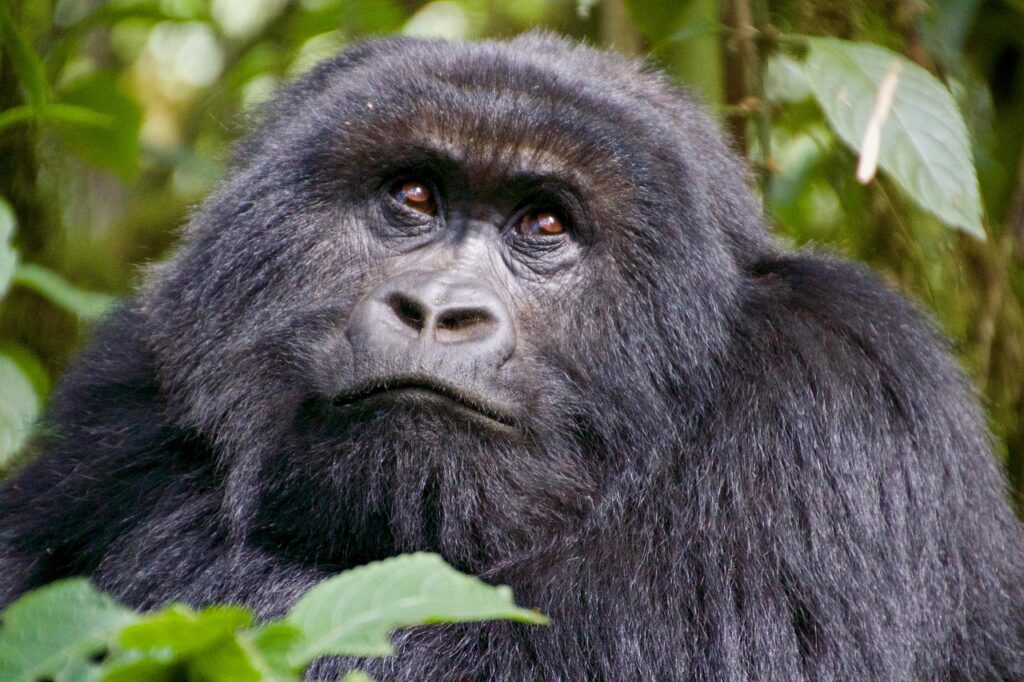
What is the biggest threat to gorillas?
The biggest threat is habitat loss caused by agriculture, logging, and human encroachment, alongside poaching and diseases transmitted by humans.
How many types of gorillas are there?
There are two main species, eastern gorillas and western gorillas, with four recognized subspecies: mountain gorillas, eastern lowland gorillas, western lowland gorillas, and cross river gorillas.
Do gorillas use tools?
Yes, gorillas have been observed using sticks and other natural objects to assist in foraging and problem-solving.
How do gorillas communicate with each other?
They use a combination of vocalizations, body language, facial expressions, and chest beating to communicate.
Are gorillas endangered?
Yes, all gorilla subspecies are considered endangered or critically endangered due to human-related threats.
The Vital Role of Gorillas in Their Ecosystems
Facts about gorillas highlight their important ecological role in maintaining the health of their natural habitats. Gorillas are considered a keystone species, meaning their presence has a significant impact on the environment and other wildlife.
Seed Dispersers and Forest Gardeners
As gorillas consume a variety of fruits, leaves, and plants, seeds often pass through their digestive systems unharmed and are dispersed across large areas.
This seed dispersal supports forest regeneration and biodiversity. Without gorillas, many plant species could struggle to propagate, threatening the delicate balance of tropical forests.
Impact on the Forest Ecosystem
Gorillas’ foraging behavior also helps shape vegetation patterns. By breaking branches and feeding on certain plants, gorillas create openings in dense forest canopies that allow sunlight to reach the forest floor.
These openings promote the growth of new plants and provide habitats for smaller animals and insects.
Expand your knowledge by reading these Interesting Facts About Snakes (The Best 50)
Interaction with Other Wildlife
Although gorillas are herbivores, their presence influences other wild animals. For instance, smaller mammals and birds often follow gorilla groups, feeding on insects stirred up by their movement.
Such interactions exemplify the interconnectedness of species within their habitats.

Human Impact and the Importance of Conservation
In recent years, facts about gorillas have taken on increased significance due to the accelerating threats posed by human populations.
Rapid expansion of agriculture, mining, and logging have resulted in severe habitat destruction.
Additionally, human diseases have caused devastating outbreaks among gorilla populations, showing how closely linked human and gorilla health are.
Conservation Efforts and Local Involvement
Conservationists recognize that successful protection of gorillas requires collaboration with local communities.
Many initiatives involve educating people about the importance of gorillas and providing sustainable alternatives to activities that harm their habitats.
Eco-tourism, such as mountain gorilla trekking, provides income and incentives for locals to protect gorillas and their environment.
Anti-Poaching and Legal Protection
National parks and reserves are enforced by anti-poaching patrols that monitor illegal activities. International laws also protect gorillas from hunting and trafficking.
However, challenges remain, and ongoing support is essential to ensure enforcement and conservation success.
Physical Appearance and Unique Characteristics
Numerous facts about gorillas focus on their remarkable physical traits that distinguish them from other primates.
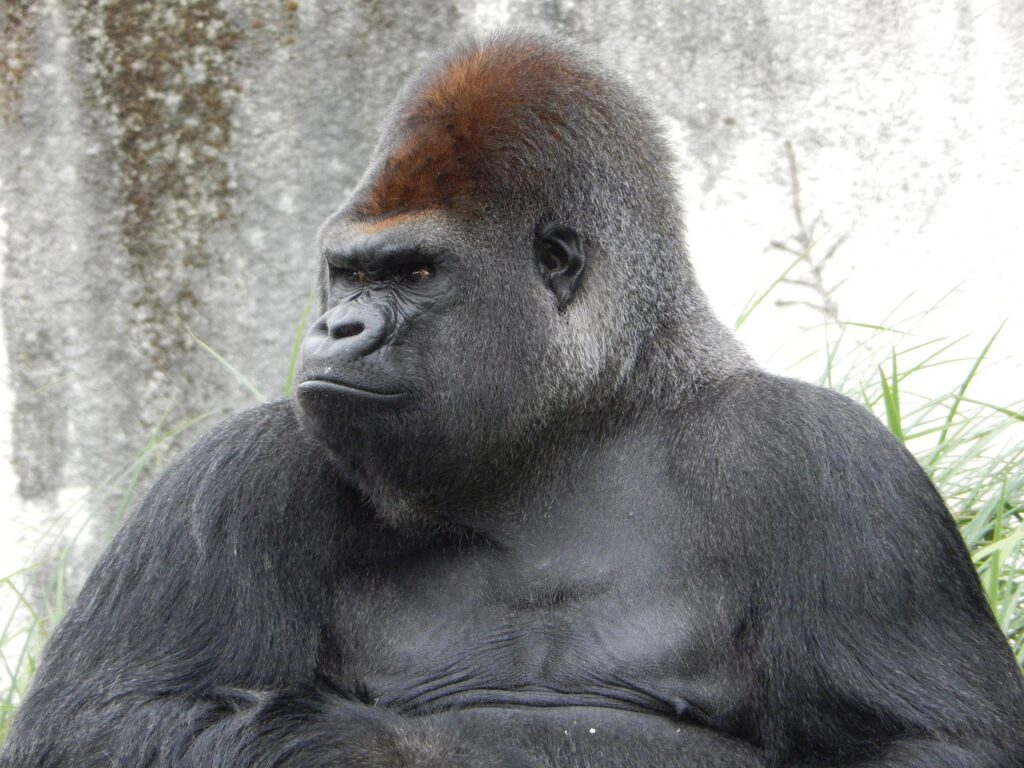
Largest Primates and Broad Chests
Gorillas are the largest living primates, with adult males sometimes exceeding 400 pounds.
Their broad chests and muscular arms give them tremendous strength, used both for foraging and protecting their family groups.
Despite this power, adult gorillas are known for their calm and gentle nature.
Unique Fingerprints and Opposable Thumbs
Just like human beings, individual gorillas have unique fingerprints, making identification possible. Their opposable thumbs and fingers allow for precise grasping and manipulation of objects.
This dexterity is essential for feeding, grooming, and tool use.
Silverback Gorillas and Their Role
The silverback gorilla is a mature adult male with a patch of silver hair on its back, signaling dominance. This visual cue helps other gorillas recognize the leader within a group.
The dominant silverback maintains order, mediates conflicts, and leads the group to feeding and resting sites.
Gorilla Behavior: Body Language and Social Interaction
Communication among gorillas relies heavily on body language and social cues.
Chest Beating and Vocalizations
Chest beating is one of the most iconic behaviors associated with gorillas. While it can serve as a warning to rivals or predators, it also functions as a form of communication within gorilla families.
Vocalizations such as grunts, hoots, and roars further express emotions ranging from contentment to alarm.
Facial Expressions and Emotional Depth
Gorillas use a variety of facial expressions to indicate feelings. For example, a relaxed gorilla may have a soft gaze, while a tight-lipped grimace may indicate tension or aggression.
These expressions demonstrate the emotional depth and intelligence of gorillas as social animals.
How Can We Help Protect Gorillas?
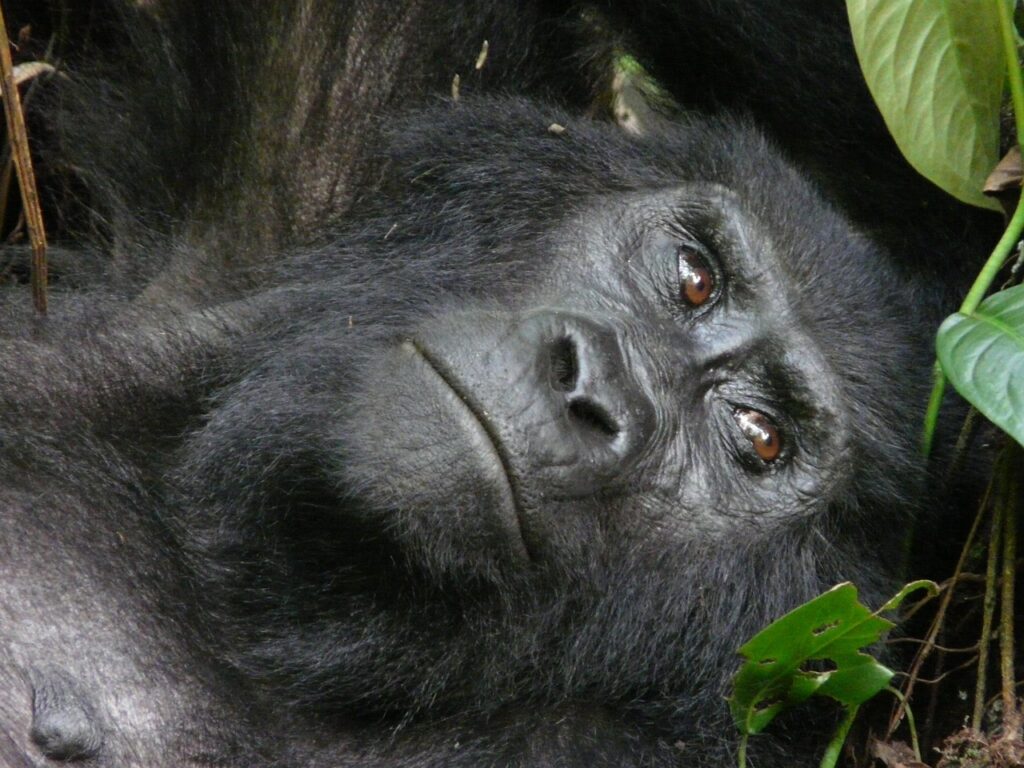
As the biggest threat to gorillas continues to be habitat loss and human impact, conservation efforts are critical to their survival.
Educating people worldwide about facts about gorillas fosters empathy and encourages support for protective measures.
Supporting Conservation Organizations
Organizations like the Dian Fossey Gorilla Fund and the World Wildlife Fund play a vital role in safeguarding gorillas.
They conduct research, fund anti-poaching patrols, and work closely with local communities to create sustainable solutions.
Supporting such groups, whether through donations or advocacy, directly benefits gorilla families in the wild.
Responsible Ecotourism
Mountain gorilla trekking in national parks offers an opportunity to see these magnificent creatures while contributing to their protection.
Strict guidelines ensure minimal disturbance, and tourism revenues support local economies and conservation projects.
Reducing Human Impact
Addressing habitat destruction involves promoting sustainable agriculture and logging practices.
Encouraging governments to enforce wildlife protection laws and combat illegal wildlife trade is also essential to reduce threats to gorillas.
Expand your knowledge by reading these 24 Fun Facts About Blue Jays: The Wise Bird of North America
Facts About Gorillas Conclusion: Why Facts About Gorillas Matter
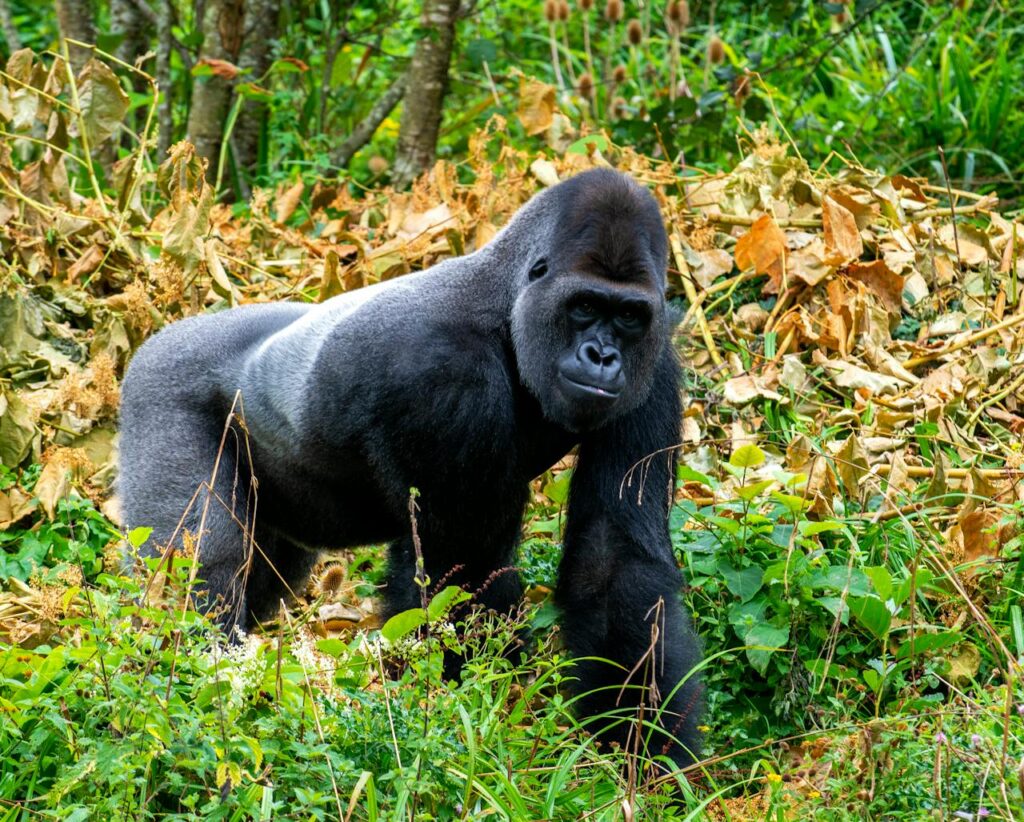
The extensive facts about gorillas reveal their complexity as social animals, their intelligence, and their crucial role in ecosystems.
These gentle giants, despite their size and strength, face enormous challenges caused by human activity.
Understanding their social structure, habitat needs, and behaviors fosters appreciation and highlights why conservation efforts are urgent.
Moreover, the close genetic relationship between gorillas and human beings reminds us of our shared heritage and responsibilities.
By protecting gorilla species and their natural habitats, the balance of tropical forests can be maintained for generations to come.
Ultimately, the survival of gorillas depends on global awareness, local involvement, and continued research.
These fascinating creatures deserve a future where they can thrive freely in the wild, symbolizing both the richness and fragility of the animal kingdom.




